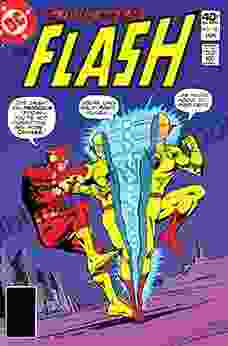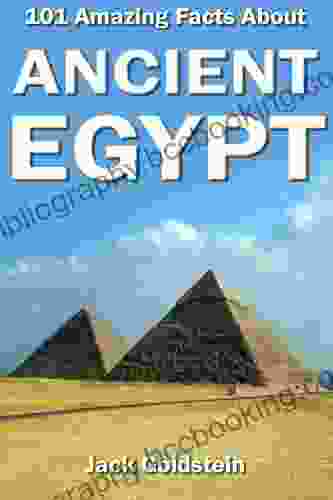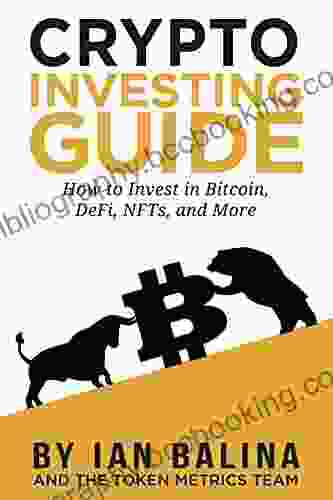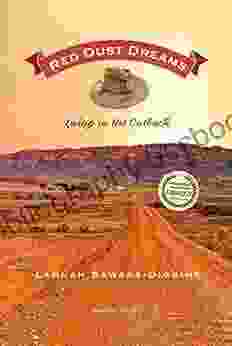How to Invest in Bitcoin, DeFi, NFTs, and More: The Ultimate Guide to Making Money in the Digital Age

In the past decade, the world of finance has been transformed by the rise of digital currencies. Bitcoin, the first and most well-known cryptocurrency, was created in 2009, and since then, hundreds of other cryptocurrencies have been launched. In addition to cryptocurrencies, other digital assets such as DeFi (decentralized finance) tokens and NFTs (non-fungible tokens) have also emerged.
4.6 out of 5
| Language | : | English |
| File size | : | 11088 KB |
| Text-to-Speech | : | Enabled |
| Screen Reader | : | Supported |
| Enhanced typesetting | : | Enabled |
| X-Ray | : | Enabled |
| Print length | : | 230 pages |
These new digital assets have created a wealth of new investment opportunities. However, investing in digital assets can be complex and risky. That's why we've created this ultimate guide to investing in Bitcoin, DeFi, NFTs, and more. In this guide, we'll cover everything you need to know to get started, including:
- What are Bitcoin, DeFi, NFTs, and other digital assets?
- How to buy, sell, and store digital assets
- The risks and rewards of investing in digital assets
- How to create a diversified portfolio of digital assets
- The future of digital assets
If you're ready to learn how to invest in Bitcoin, DeFi, NFTs, and more, then this guide is for you. Let's get started!
Chapter 1: What Are Bitcoin, DeFi, NFTs, and Other Digital Assets?
In this chapter, we'll cover the basics of Bitcoin, DeFi, NFTs, and other digital assets. We'll discuss what these assets are, how they work, and why they're so valuable.
Bitcoin
Bitcoin is a decentralized digital currency that was created in 2009 by Satoshi Nakamoto. Bitcoin is unique in that it is not controlled by any government or central bank. Instead, the Bitcoin network is maintained by a distributed network of computers around the world.
Bitcoin can be used to Free Download goods and services online, and it can also be traded for other currencies. Bitcoin is a volatile asset, but it has also been one of the best-performing investments in recent years.
DeFi
DeFi (decentralized finance) is a new financial system that is built on blockchain technology. DeFi applications allow users to borrow, lend, trade, and save money without having to go through a traditional bank.
DeFi is still in its early stages of development, but it has the potential to revolutionize the financial industry. DeFi applications can offer lower fees, faster transaction times, and more transparency than traditional financial institutions.
NFTs
NFTs (non-fungible tokens) are digital assets that represent ownership of unique items. NFTs can be used to represent artwork, music, videos, and other digital collectibles.
NFTs are unique in that they cannot be replicated or divided. This makes them ideal for representing ownership of unique items. NFTs are a new asset class, but they have the potential to become a major force in the digital economy.
Chapter 2: How to Buy, Sell, and Store Digital Assets
In this chapter, we'll cover how to buy, sell, and store digital assets. We'll discuss the different types of exchanges, wallets, and other tools that you'll need to get started.
Buying Digital Assets
The first step to investing in digital assets is to buy them. There are a number of different exchanges where you can buy digital assets. Some of the most popular exchanges include Binance, Coinbase, and Kraken.
When you're buying digital assets, it's important to compare the fees charged by different exchanges. You'll also want to make sure that the exchange you choose is reputable and secure.
Selling Digital Assets
Once you've bought some digital assets, you may want to sell them at some point. You can sell digital assets on the same exchanges where you bought them.
When you're selling digital assets, it's important to consider the tax implications. In some countries, you may have to pay capital gains tax on the profits you make from selling digital assets.
Storing Digital Assets
Once you've bought some digital assets, you need to store them securely. There are a number of different ways to store digital assets, including hardware wallets, software wallets, and exchanges.
Hardware wallets are the most secure way to store digital assets. Hardware wallets are small devices that store your private keys offline. This makes it very difficult for hackers to steal your digital assets.
Software wallets are less secure than hardware wallets, but they're also more convenient. Software wallets are apps that you can install on your computer or mobile device. Software wallets are a good option for storing small amounts of digital assets.
Exchanges are the least secure way to store digital assets. However, exchanges are also the most convenient way to buy and sell digital assets. If you're planning to trade digital assets frequently, then you may want to keep a small amount of your assets on an exchange.
Chapter 3: The Risks and Rewards of Investing in Digital Assets
Investing in digital assets can be both rewarding and risky. In this chapter, we'll discuss the risks and rewards of investing in digital assets so that you can make informed investment decisions.
Risks
There are a number of risks associated with investing in digital assets. These risks include:
- Volatility: Digital assets are volatile, which means their prices can fluctuate wildly. This can make it difficult to predict the value of your investment.
- Security: Digital assets are stored on computers, which makes them vulnerable to hacking. If your digital assets are stolen, you may not be able to recover them.
- Regulation: Digital assets are not regulated by any government or central bank. This means that there is no guarantee that your investment will be protected.
Rewards
There are also a number of rewards associated with investing in digital assets. These rewards include:
- Growth potential: Digital assets have the potential to grow in value significantly. This is especially true for early-stage digital assets.
- Diversification: Digital assets can help you diversify your portfolio. This can reduce
4.6 out of 5
| Language | : | English |
| File size | : | 11088 KB |
| Text-to-Speech | : | Enabled |
| Screen Reader | : | Supported |
| Enhanced typesetting | : | Enabled |
| X-Ray | : | Enabled |
| Print length | : | 230 pages |
Do you want to contribute by writing guest posts on this blog?
Please contact us and send us a resume of previous articles that you have written.
 Book
Book Novel
Novel Page
Page Chapter
Chapter Text
Text Story
Story Genre
Genre Reader
Reader Library
Library Paperback
Paperback E-book
E-book Magazine
Magazine Newspaper
Newspaper Paragraph
Paragraph Sentence
Sentence Bookmark
Bookmark Shelf
Shelf Glossary
Glossary Bibliography
Bibliography Foreword
Foreword Preface
Preface Synopsis
Synopsis Annotation
Annotation Footnote
Footnote Manuscript
Manuscript Scroll
Scroll Codex
Codex Tome
Tome Bestseller
Bestseller Classics
Classics Library card
Library card Narrative
Narrative Biography
Biography Autobiography
Autobiography Memoir
Memoir Reference
Reference Encyclopedia
Encyclopedia Kathi Daley
Kathi Daley Steve Cavanagh
Steve Cavanagh Ivy Rose
Ivy Rose Ivy Laika
Ivy Laika Jay Clarke
Jay Clarke J W Gibson
J W Gibson J Nell
J Nell Jack Burns
Jack Burns J T Burns
J T Burns Roger C Gibson
Roger C Gibson Kerstin Gier
Kerstin Gier Ian Falconer
Ian Falconer Inna Z Khazan
Inna Z Khazan Michael Paduch
Michael Paduch Roxie Kelley
Roxie Kelley J T Baier
J T Baier Sei Shonagon
Sei Shonagon Huw Price
Huw Price Lila Shanti
Lila Shanti Irene Roderick
Irene Roderick
Light bulbAdvertise smarter! Our strategic ad space ensures maximum exposure. Reserve your spot today!

 Manuel ButlerThe Worst Christmas in the Whole Entire World: A Hilarious Holiday Adventure...
Manuel ButlerThe Worst Christmas in the Whole Entire World: A Hilarious Holiday Adventure... Victor TurnerFollow ·14.4k
Victor TurnerFollow ·14.4k Clark BellFollow ·10.8k
Clark BellFollow ·10.8k Emmett MitchellFollow ·12.9k
Emmett MitchellFollow ·12.9k Jean BlairFollow ·9k
Jean BlairFollow ·9k Edwin CoxFollow ·4.7k
Edwin CoxFollow ·4.7k W. Somerset MaughamFollow ·6.8k
W. Somerset MaughamFollow ·6.8k Jesse BellFollow ·13.5k
Jesse BellFollow ·13.5k Ismael HayesFollow ·9.7k
Ismael HayesFollow ·9.7k

 Luke Blair
Luke Blair101 Amazing Facts About Australia: A Journey Through the...
A Literary Expedition Unveiling the Treasures...

 Harry Hayes
Harry HayesWitness the Velocity and Legacy of the Scarlet Speedster:...
Delve into the Lightning-Charged...

 Stan Ward
Stan Ward101 Amazing Facts About Ancient Egypt: Unraveling the...
: A Timeless Realm of Wonder Ancient Egypt, a...

 Stephen King
Stephen KingEscape into Adventure: Unveil the Secrets of Adventure...
In the annals of comic book history,...

 Forrest Blair
Forrest BlairThe Oxford Dog Training Company Presents: A Holistic...
In the realm of dog...
4.6 out of 5
| Language | : | English |
| File size | : | 11088 KB |
| Text-to-Speech | : | Enabled |
| Screen Reader | : | Supported |
| Enhanced typesetting | : | Enabled |
| X-Ray | : | Enabled |
| Print length | : | 230 pages |












